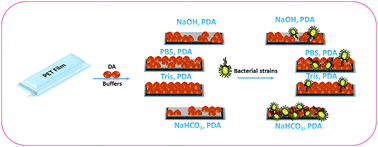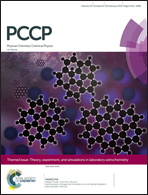Polydopamine films change their physicochemical and antimicrobial properties with a change in reaction conditions†
Abstract
The morphology and physicochemical properties of polydopamine are not totally inherent and undergo changes with differing reaction conditions like the choice of solvent used for polymerization. The polymerisation of dopamine to polydopamine carried out in different solvents like sodium hydroxide, sodium bicarbonate, PBS and Tris leads to polydopamine with exceptionally different morphological and physicochemical features with each solvent. Additionally, the different physicochemical characteristics and morphologies bestow the polymer films with different extents of antimicrobial activity. Moreover, the findings supported by chemical evidence from X-ray photoelectron spectroscopy reveal that higher antibacterial activities were obtained against E. coli and S. aureus with polydopamine films prepared by Tris and NaOH solvent induced polymerization. The antibacterial activity observed in saline was found to be higher than that in PBS medium for both E. coli and S. aureus. The higher antibacterial activity of polydopamine films prepared in Tris and NaOH solvents was attributed to the covalent incorporation of –OH groups on the surface provided by nucleophilic Tris and NaOH solvents during the polymerisation process. The distinct physicochemical and morphological changes were supported by the results from contact angle measurements, FE-SEM, EDAX, AFM, and XPS analysis. The present finding provides insight into the different chemistry, morphologies and properties of the designed polydopamine films with controlled antibacterial/antifouling properties. Additionally, new insights into the mechanism of formation, physicochemical changes in morphology and properties of polydopamine coatings were revealed.



 Please wait while we load your content...
Please wait while we load your content...